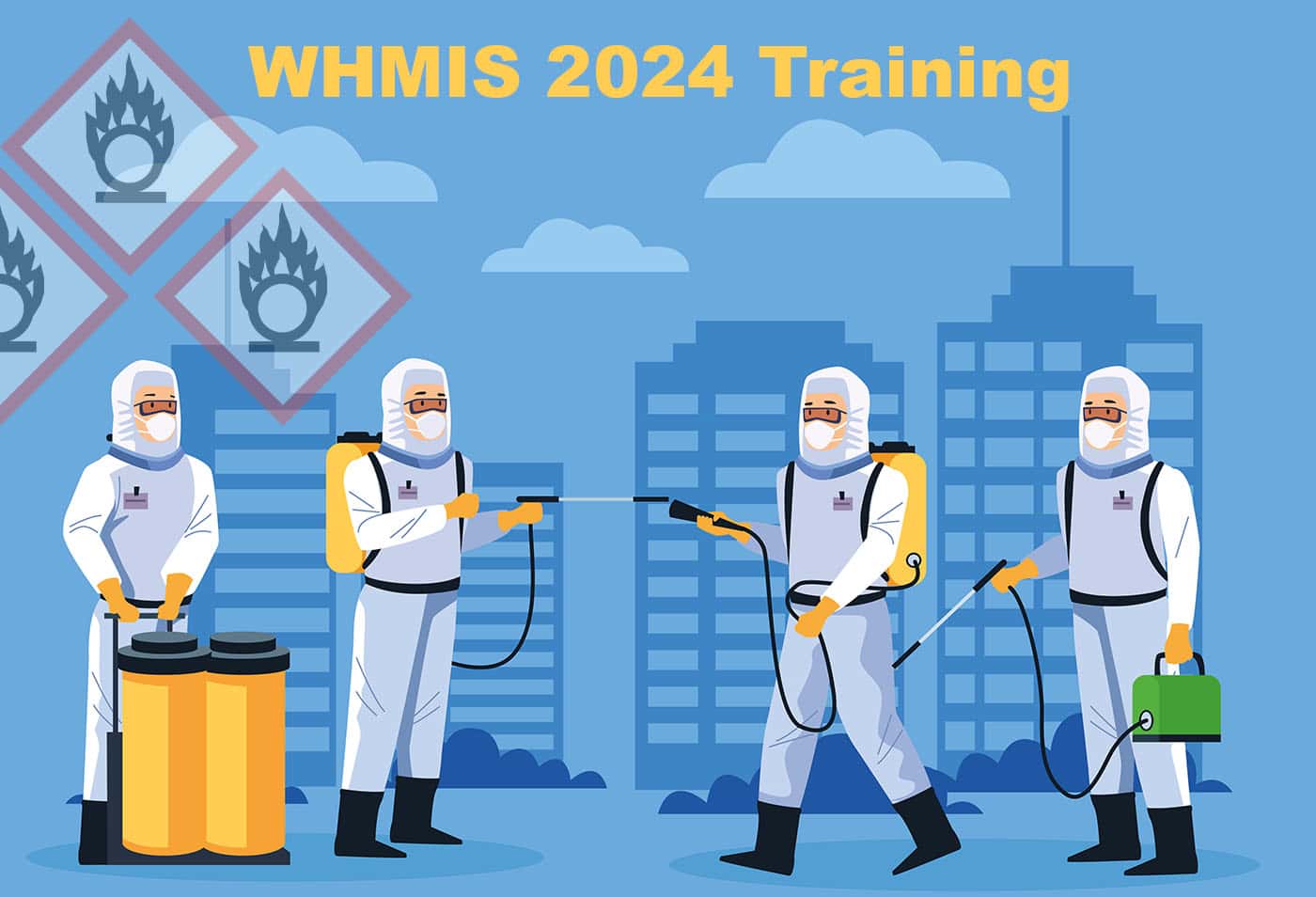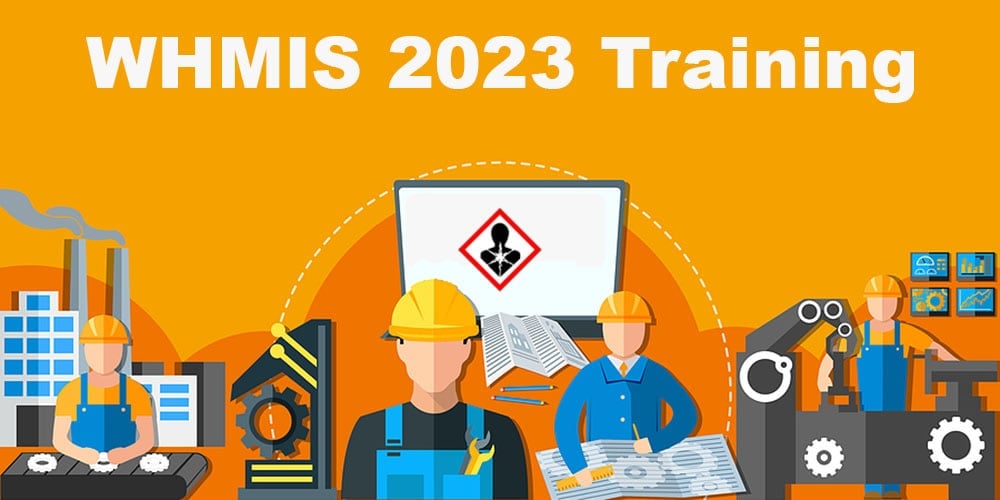Who Is Responsible for WHMIS? What Employers Need to Know
Does your company have hazardous products that your employees work with or around? Are you wondering who is responsible for WHMIS training and certification?
WHMIS certification training is meant to ensure that workers receive a minimum standard of knowledge of the hazardous products used in the workplace.
The law says that every employee who works in an environment that exposes or provides a risk of exposure to hazardous products must have training.
Who is responsible for WHMIS certification training? Ultimately, the employer is responsible for ensuring workers receive adequate training.
Here’s what you need to know about WHMIS 2015 training and how to ensure you comply with the law.
What Is the Workplace Hazardous Materials Information System (WHMIS) Certification?
The Workplace Hazardous Materials Information System (WHMIS) is a national program put in place by several pieces of Canadian legislation. Its goal: to ensure safety for everyone at work who may be exposed to chemical hazards and provide the same basic safety requirements across Canada.
Individual provinces can have additional legislation relating to WHMIS. For the most part, the law is fairly consistent from province to province.
Does WHMIS Apply to Your Business?
WHMIS applies to your workplace anytime a product used onsite falls into one of the classes of WHMIS and has a WHMIS label.
WHMIS 2015 Hazard Classes include:
- Gases Under Pressure
- Flammables, Self-Heating, Emit Flammable Gases, Pyrophoric Gases, Liquids & Solids Organic Peroxides
- Oxidizing Gases, Liquids, Solids
- Acute Toxicity – Oral, Dermal, Inhalation
- Eye Irritation, Skin Irritation, Skin/Respiratory Sensitization, Carcinogenicity, Mutagenicity, Reproductive Hazards
- Biohazardous Infectious materials
- Sky/Eye Corrosion Corrosive to Metals
- Self-Reactive Substances Organic Peroxides
- Explosive Substances
- Aspiration, STOT
- Combustible Dust
- Simple Asphyxiants
- Physical Hazards Not Otherwise Classified, Health Hazards Not Otherwise Classified
You may encounter strange symbols such as the skull and crossbones hazard symbol. If the symbol is on a consumer product – one available in stores to Canadian consumers – then the product is only partially exempt.
You don’t need to label a consumer product, but you do need to deliver training to workers who use the product as part of their job or who might come into contact.
WHMIS Key Elements: Who Is Responsible for WHMIS?
WHMIS is about providing information to workers about the chemicals they work with. The critical components of WHMIS information delivery include:
- Worker training programs
- Providing information through Safety Data Sheets
- Ensuring that hazardous products are labeled
Who is responsible for WHMIS? The law states that all employers who have employees with a risk of exposure to hazardous materials or controlled products must provide the training.
It is always up to the employer to make sure staff receiving training before working with or near hazardous materials.
Worker Training Programs
Training employees on WHMIS 2015 is a vital part of the program.
What employees does this include? It means anyone who:
- Works around
- Handles
- Uses
- Stores
- Disposes
- Supervises workers performing any of the above duties
- Experiences health and safety risk because of the above activities
Specific rules apply to the party who is responsible for WHMIS training and certification such as when and how often it occurs and what it must include.
When Do I Need to Provide Training?
The law requires WHMIS training to be provided before working with or around hazardous products. Further, periodic training may be required depending on the conditions of the workplace. It’s up to an employer to determine how often its workforce requires WHMIS training.
You’ll also need to update your training to reflect the new WHMIS 2015 standards if you have not already done so.
Reviewing your training policies allows you to assess the level of knowledge among your employees. Well-trained employees know:
- Where to get hazard information
- What hazards exist in your controlled product inventory
- What protections employers put in place
- What protocol to follow in case of an emergency
You may need to re-train more often when:
- you introduce new hazards
- you introduce a change in work conditions
- new information becomes available about hazards
- added training becomes necessary to protect health and safety
You won’t need to perform the review on your own. Expect to coordinate or consult with the health and safety representative or joint health and safety committee throughout the process.
How Do I Review the Training?
Before providing or reviewing the training, you’ll need to start with identifying your training needs.
An assessment of both your workplace and systems accomplishes this. During the investigation, you need to ask:
- Do you have an inventory of hazardous products?
- Do all hazardous materials have WHMIS labels?
- Are the labels visible and in good condition?
- Did you complete current SDS for every material on the inventory?
- Is every SDS complete?
- Do you have practices for all handling/storage/use/disposal of hazardous products?
- Do you follow the practices?
You should also inventory your prevention systems including the:
- Ventilation system
- Personal protective equipment (PPE)
- Emergency response procedures and equipment
- Industrial hygiene facilities
- Storage facilities
- Disposal facilities
The inventory will help you determine the needs of your site-specific training.
What Must the Training Include?
Training programs typically include two components.
First, it must cover general information about WHMIS. We recommend delivering general training and certification online to large or small groups. It will cover topics that include:
- What WHMIS is and how it works
- Hazards of 2015 WHMIS product classes
- Information on labels and what labels mean
- SDS and what the data means
- Procedures for safe use, handling, and disposal
- System for exposure and emergencies
The second component will be site-specific and cover the products your workers are using and the required measures to work with them safely.
For your training to be adequate, it should also be:
- Implemented in consultation with a joint health and safety committee
- Reviewed at least annually
- In a language and format workers understand
- Available to new, part-time, transferred and casual workers
Are You WHMIS Compliant?
Do you know who is responsible for WHMIS at your workplace? The answer is always the employer. However, employees also have responsibilities. These include participating in WHMIS training and following the procedures learned to promote safe practices.
If you or your company is in need of WHMIS training, you can complete your general training with OnlineWHMIS.ca. We offer WHMIS and GHS standards compliant training with a WHMIS certificate that’s widely accepted.







